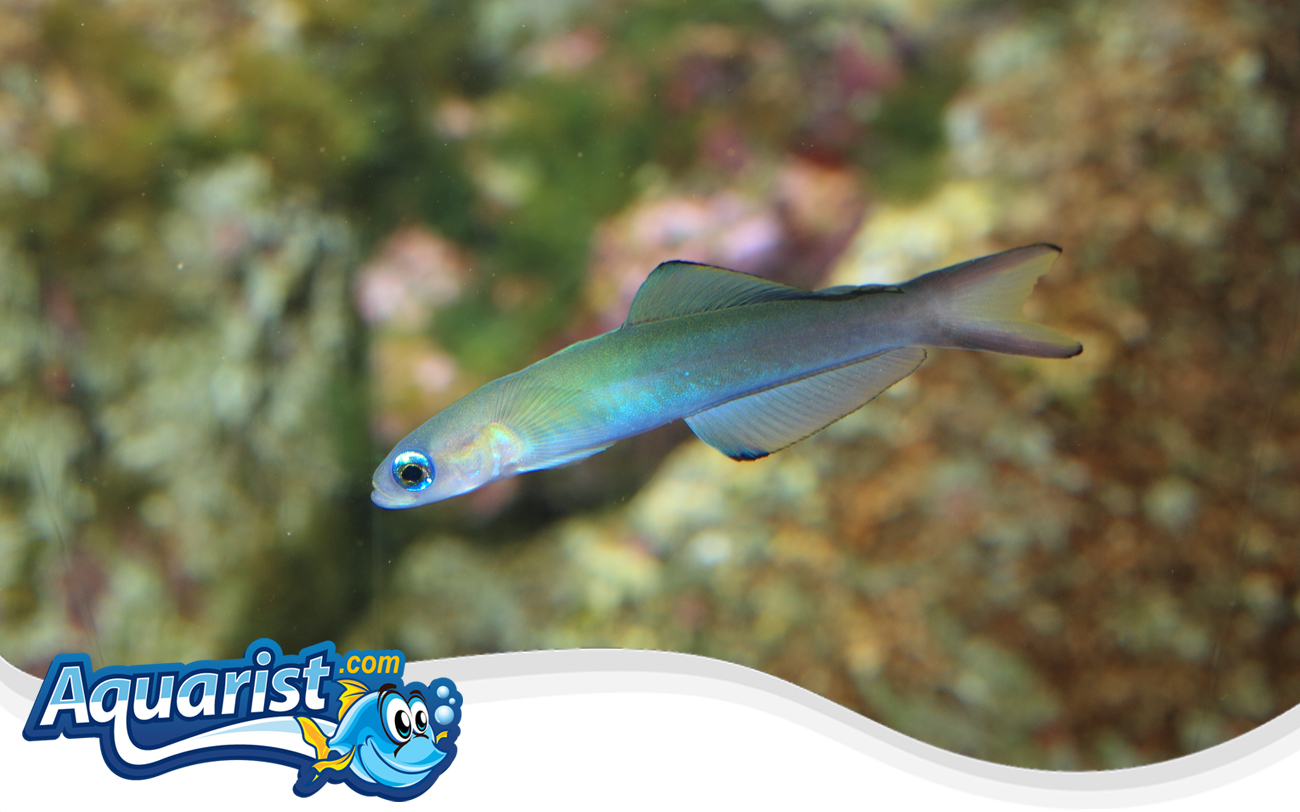Overview
- Native to the Indo-Pacific region, frequently found over sand and rubble substrates near reefs.
- Distinctive slender body with a pale blue-green coloration and iridescent blue highlights along its sides.
- Known for peaceful and timid behavior, typically hovering gracefully above the substrate.
- Ideal choice for community reef aquariums due to its calm nature and attractive appearance.
Feeding
- Carnivorous diet, naturally feeding on zooplankton and small crustaceans.
- Accepts frozen and live foods such as mysis shrimp, brine shrimp, plankton, and finely chopped seafood.
- Multiple small daily feedings recommended to maintain health and vibrant coloration.
- A varied diet ensures nutritional balance and longevity.
Habitat
- Prefers medium-sized aquariums (minimum 30 gallons) with open swimming spaces and plenty of hiding spots.
- Stable, mature aquarium environment essential for long-term health.
- Provide sandy substrates, caves, and live rock formations to replicate their natural habitat.
- Gentle water movement and effective filtration required to maintain ideal water quality.
Fish Care
- Optimal water temperature: 72-78°F (22-26°C).
- Recommended pH: 8.1-8.4; specific gravity: 1.020-1.025.
- Sensitive to abrupt water changes; regular water testing and careful maintenance important.
- Monitor regularly for signs of marine diseases and parasites; timely treatment ensures optimal health.
Compatibility
- Peaceful species suitable for community aquariums with non-aggressive tank mates.
- Reef-safe; compatible with corals, ornamental shrimp, and other marine invertebrates.
- Ideal tank mates include gobies, small wrasses, firefish, clownfish, and other peaceful marine species.
- Usually kept singly or in pairs; groups may be kept in larger aquariums to minimize territorial disputes.
Aquarium Behavior
- Calm and peaceful swimmer typically hovering in open water near the substrate.
- Timid and shy by nature; quickly retreats to hiding places when startled.
- Providing ample hiding spaces and peaceful surroundings helps reduce stress and encourages natural behavior.
- Thrives in quiet, stable aquarium environments with gentle tank mates.


